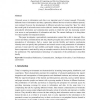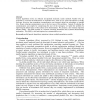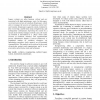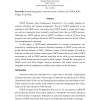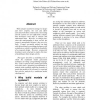COMPSAC
2002
IEEE
14 years 26 days ago
2002
IEEE
Universal access to information and data is an important goal of current research. Previously different forms of information and data, captured by different devices or held on dif...
COMPSAC
2002
IEEE
14 years 26 days ago
2002
IEEE
COMPSAC
2002
IEEE
14 years 26 days ago
2002
IEEE
Many organizations would benefit from enterprise-wide, shared information systems. It is common for these organizations to have in place a number of smaller information systems, e...
COMPSAC
2002
IEEE
14 years 26 days ago
2002
IEEE
Genetic algorithms (GAs) are efficient non-gradient stochastic search methods. Parallel GAs are proposed to overcome the deficiencies of sequential GAs, such as low speed and aptn...
COMPSAC
2002
IEEE
14 years 26 days ago
2002
IEEE
Legacy systems are often business critical and are associated with high maintenance costs. In this paper, we present an overview of a method, Renaissance, which aims to manage the...
COMPSAC
2002
IEEE
14 years 26 days ago
2002
IEEE
COMPSAC
2002
IEEE
14 years 26 days ago
2002
IEEE
COMPSAC
2002
IEEE
14 years 26 days ago
2002
IEEE
A workflow system provides enterprises the automatic and paperless process management. The idea of Enterprise JavaBeans (EJB) is to utilize components from various vendors to cons...
COMPSAC
2002
IEEE
14 years 26 days ago
2002
IEEE
COMPSAC
2002
IEEE
14 years 26 days ago
2002
IEEE
With computer systems becoming ever larger and more complex, the cost and effort associated with their construction is increasing and the systems are now sufficiently complex that...
